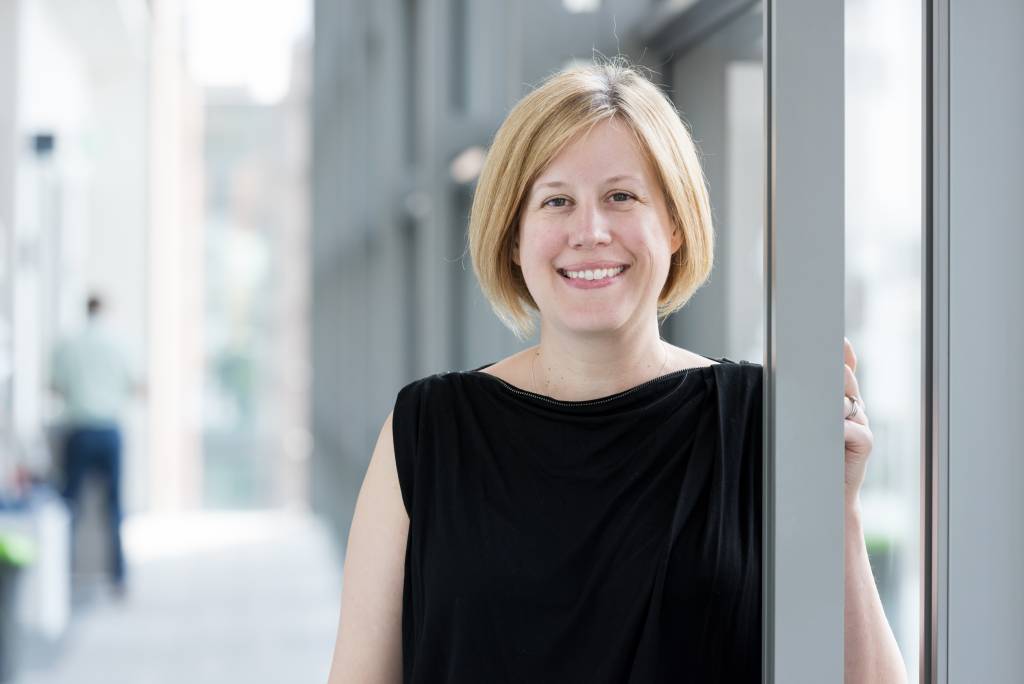Keynote speakers

Sara Bals
Sara Bals received her PhD in 2003 at UAntwerp. From 2003-2004, she did postdoctoral work at the National Center of Electron Microscopy in Berkeley, USA. The focus of her work was the development of electron tomography for materials science. After returning to UAntwerp, she initiated her own research line on high resolution electron tomography within the EMAT group (Electron Microscopy for Materials Science), where she is a Full Professor. Sara Bals is an expert in the application and development of electron tomography for functional nanomaterials. By combining state-of-the-art electron microscopy with advanced 3D reconstruction algorithms, the positions and chemical nature of individual atoms in a nanomaterial are measured. These measurements are now also performed under realistic conditions (heating, liquid or gas flow experiments). She was awarded an ERC Starting grant in 2012, an ERC Consolidator grant in 2018, received the award “Laureate of the Academy for Natural Sciences” by the Royal Flemish Academy in 2016, became Francqui research professor in 2017 and was elected as member of the Royal Flemish Academy of Belgium for Science and the Arts in 2020. She received the European Microscopy Award in 2020 and the ACS Nano Lectureship award in 2021.

Lucy Collinson
Lucy Collinson is an electron microscopist with a background in microbiology and cell biology. She has a degree and PhD in Medical Microbiology, and post-doctoral research investigating membrane trafficking pathways. She has run a series of biological EM facilities since 2004, at UCL and then at the Cancer Research UK London Research Institute, which became part of the Francis Crick Institute in 2015. With a team of 10 electron microscopists and 3 physicists, she oversees more than 100 research projects with more than 60 research groups within the Crick, imaging across scales from proteins to whole organisms. Her microscopy and technology development interests include volume EM, correlative imaging techniques, cryo-microscopy, X-ray microscopy, image analysis, citizen science, microscope design and prototyping.

Jianghua Chen
Jianghua Chen has engaged in the field of transmission electron microscopy (TEM) for materials science for 35 years and mainly focuses on the development of TEM theories and methods for diffraction and imaging techniques, and on the TEM applications to materials research. Currently, he is a professor in the College of Material Science and Engineering and the director of the Center for High-Resolution Electron Microscopy (CHREM) at Hunan University, China. After receiving his B.S. at the Central-South University and his MA.Sc (with Prof. K. H. Kuo) in the Institute of Metals Research at Chinese Academy of Sciences, he worked as a lecturer at Sichuan University for 8 years (1986–1994). Then he had worked in Europe for 14 years. Firstly in Belgium he did his Ph.D study and a postdoc job in the Electron Microscopy Lab at the University of Antwerp (1994–1998). Then in Germany he worked at Research Center Juelich for two years on the world first prototype Cs-corrected TEM. He then worked as a permanent senior scientist of the Netherlands Institute for Metals Research. After 2007, he gradually transferred his position from Holland to China. Jianghua Chen established a few theories and methods for accurate and quantitative analysis of diffraction and imaging in TEM, and also developed a few techniques for achieving atomic-resolution imaging in modern TEM. Having mastered the advanced TEM instruments, he demonstrated as a pioneer how to determine the structures of small precipitates in aluminum alloys using quantitative atomic-imaging techniques. Based on the precisely determined precipitate structures, he revealed the quick-bake-hardening mechanism of the automotive AlMgSi alloys at the atomic-scale. Since then he solved many structure problems in metals. Chen holds 12 patents and has published more than 160 papers. Due to his contributions to electron microscopy for materials science, he has won many awards including the prestigious Distinguished Scientists Award 2016, granted by China Association for Science and Technology, and the honorable title of Chang Jiang Scholar Professor, granted by China Ministry of Education in 2008. He has been elected as academician of Asia-Pacific Academy of Materials in 2019.

Giuseppe Balistreri
Giuseppe Balistreri obtained a PhD in Molecular Virology from The University of Finland after which he joined the research group of Prof Ari Helenius at the ETH Zurich, working on virus-cell interactions. After a brief excursion into tumorigenic viruses, Dr. Balistreri established his own research group in 2018 at the University of Helsinki, Finland, and he is an Honorary Adjunct Associate Professor at the University of Queensland, Australia. The focus of my research lies at the interface of basic cell biology, virology, and in vivo translational biology. Currently, my main research objectives are: 1) to continue developing state-of-the-art genetic screening approaches and automated imaging techniques to study virus-host interactions at whole-genome scale, and identify key cellular regulators of virus infection; 2) to understand how neurons and the epithelial cells of our respiratory tract interact with molecules that arrive from the ‘outside world’, and how viruses take advantage of these mechanisms to enter and infect human cells; 3) to develop novel combinatorial therapies with virus-specific or pan-antiviral activity and to establish pre-clinical animal models to validate the top candidate antiviral combinations.
